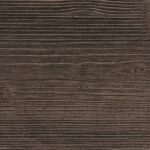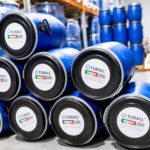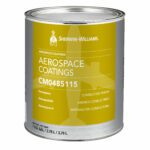Editor’s note: This column is a roundup of recent product releases from throughout the coatings and allied industries. To submit a product release for consideration, email publications@paint.org. Please note that all submissions are subject to editorial approval and publication is not guaranteed.
Paper and Cardboard Coatings
Elementis has announced its latest paper and cardboard coating, RHEOLATE® 125 P and RHEOLATE® 185 P.
The company says the rheological additives were developed to simplify coating machine operations, offering precise coat weight control while preventing binder migration to the base paper.
RHEOLATE® 125 P is an alkali swellable emulsion with an acrylic backbone that the company says is designed for optimal viscosity modification, effortless application, and superior water retention. The company describes RHEOLATE® 185 P as an HASE-type synthetic thickener that is designed for optimal viscosity modification, effortless application, and superior water retention. Both are designed to replace cellulosic thickeners and are APEO and VOC-free formulations with an active concentration ranging from 25% to 30%. These thickeners can be combined with other rheology modifiers as needed. For more information, visit elementis.com.
 Stain and Sealer in One
Stain and Sealer in One
Sto has added new colors to their StoColor® Wood Stain collection. The new stain, available for use with StoCast Wood, is of a stain and sealer in a single product.
Of the 25 colors, 15 are standard single-color tones and 10 are dual-color tones. The new color offerings are designed for interior and exterior applications. The product can be applied as a finish layer that Sto says achieves an authentic wood grain appearance and provides UV resistance. For more information, visit stocorp.com.
Thermal Insulation Coatings System
Hempel has introduced Hempatherm IC, the company’s first thermal insulation coatings system developed to replace many conventional insulation systems in the critical Corrosion Under Insulation (CUI) temperature range.
According to the company, the system is non-flammable; prevents water ingress and retention on insulated equipment; is resistant to cyclic temperatures and fluctuations; contains aerogel technology; and prevents solar heat gain with a minimum of thickness. The company says the coating is capable of replacing many types of conventional mechanical insulation within the CUI temperature range, from – 25 °C up to 177 °C (350 °F), resistant to cyclic temperatures and fluctuations. To learn more, visit hempel.com.
 New Graphene Nanotube Suspensions
New Graphene Nanotube Suspensions
Nan Chang Xinsu Nano Materials, OCSiAl’s OEM in China, has launched a new production line for TUBALL™ COAT_E and TUBALL™ LATEX waterborne graphene nanotube suspensions.
According to the company, the ready-to-use solutions based on TUBALL graphene nanotubes are designed for the manufacture of various types of high-performance conductive coatings made of epoxy, acrylic, polyester, polyurethane, and latex, as well as anti-static thermoplastic products. The ultralow nanotube dosage makes it possible to produce more functional, sustainable, and environmentally friendly products without significant adjustments in the manufacturing process. For more information, visit ocsial.com.
Milling Technology Innovations
Hockmeyer Equipment Corporation is featuring its HCP Immersion Mill at ACS as well as its latest innovation, the NexGen Vacuum Recirculation Mill, at ACS this year. The company says the equipment is designed to provide purer grinds in less time, enhancing productivity often by 100%.
According to the company, the NEXGEN™ Micro Mill achieves particle-size reduction on a laboratory scale without allowing air entrapment in the feedstock, eliminating foaming issues and reliably scaling to production-size units. For more information, visit hockmeyer.com.
 Aerospace Conductive Primer
Aerospace Conductive Primer
Sherwin-Williams Aerospace Coatings has introduced an epoxy coating designed to produce an anti-static conductive film on composite substrates.
Aerospace Conductive Primer is a two-component epoxy coating that produces a resistivity of 0.1 to 100,000 ohms per square meter. It is developed to offer a high conductivity to non-conductive substrates and is designed to work with Sherwin-Williams topcoat systems. The company says it can be air or force cured and can be applied in a wide range of environmental conditions. To learn more, visit industrial.sherwin-williams.com.
